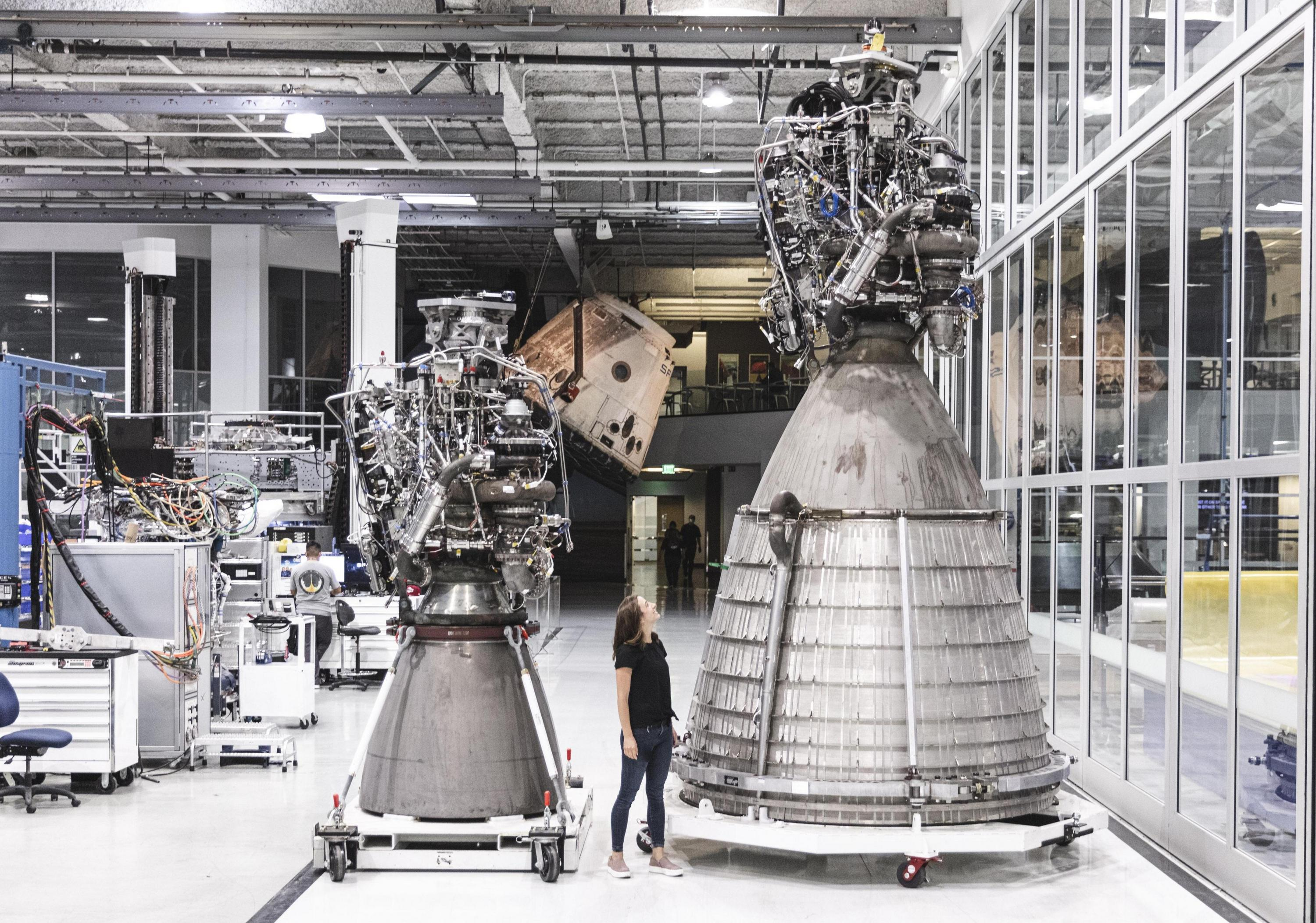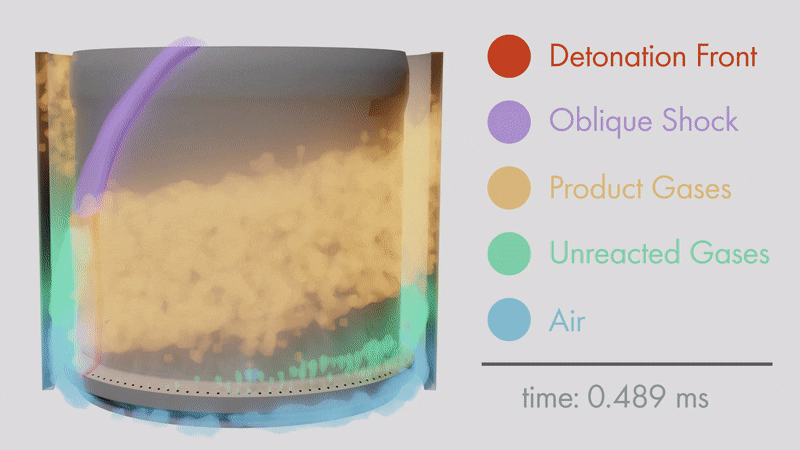‘Faster’ should be read as ‘make it technologically feasible faster’, yeah? Not that the engine itself can reduce the travel time to Mars in a meaningful way.
The title talks about getting there faster, but the article doesn’t go into specifics. Does anyone know how long a trip would currently take vs how long a trip with the new engine would take (theoretically)
So from what I understand, previous rockets shot exhaust out the back in a cone shape. That essentially sprays the exhaust out kind of like a shotgun.
This adds a donut shaped ring of plasma around the tip of the cone which focuses the exhaust into a tighter stream, more like a laser, improving thrust.
Neat!
Quite a bit more complicated with important distinctions. The biggest differences are where the combustion is occurring.
So from what I understand, previous rockets shot exhaust out the back in a cone shape. That essentially sprays the exhaust out kind of like a shotgun.
Not really. In a bell nozzle engine (which is the traditional rocket engine everyone knows about), the combustion is happening at the far inside of the bell, and the bell is shaped so that all the fuel is burned inside the bell at a specific air pressure. The thrust is provided by the burned fuel which is traveling at high speed. If the air pressure goes down (because your rocket is now higher), you’re losing unburned fuel out of the bell, and its providing no thrust. This is the limitation of bell nozzles.
Example. These are the essentially the same rocket engine. The one on the left has a smaller bell (called a skirt) because its sized for air pressure at sea level (which is high). The one on the right is size for the vacuum of space where there is essentially no air pressure.

Wouldn’t it be great if there was a single engine that worked great at sea level and equally great in vacuum? That brings us too…
This adds a donut shaped ring of plasma around the tip of the cone which focuses the exhaust into a tighter stream, more like a laser, improving thrust.
Not exactly. What you’re describing is called a regular ** “aerospike” rocket engine**, which some designs do have a cone in the middle. What makes the shape so useful it that air pressure pushes the combustion against the cone (spike) at the perfect degree at sea level and in vacuum so that it is very efficient for burning all the fuel without loss.
The problems with aerospike rocket engines is they are VERY heavy, and that cone in the middle gets CRAZY HOT and has a tendency to melt down while the rocket engine is firing
Neat!
The “neat!” is the engine the article is talking about which you haven’t described yet. This would be the Rotating Detonation Rocket Engine!
To our slow human eyes it kind of looks like a regular aerospike, but if you slow motion it, you’d see that the flame isn’t constant all the way around the cone. A RDE engine has single flame that is racing around the circle and contained by shockwave from the previous combustion.

This also means the cone in the middle stays much cooler, which means it can be made much lighter and not melt down.
Removed by mod
Do you?

Yes. Do you?
If youre going to lie, make it a believable lie.
“If you tell a lie big enough and keep repeating it, people will eventually come to believe it. The lie can be maintained only for such time as the State can shield the people from the political, economic and/or military consequences of the lie." Joseph Goebbels.
The physics behind this can theoretically improve all turbines by up to 25% efficiency. Not just rockets but turbines, thats nothing to sneeze at. Your point is noted, but misguided as nasa is around for exactly this reason to push the limits of physics not building housing. This is a huge leap forward. The brayton cycle working at the top of its efficiency curve at all is akin to jet engines over propellers. It’s that big of a deal to increase efficiency by 25% for an entire class of engines.
This does indeed appear to be a real breakthrough, as the engineering applications apply to more than just space flight as you say.
Next up: In what settings is this cost effective to implement?
I’d say still too soon to say. It’s a very touchy process to maintain so my guess is we would see this in rockets and probably large turbines used for power at first then likely ships and probably filtering down as we improve. Best bet on this is to expect it in a 10 year horizon from where it’s at. The fact we can run as long as this test did in only about 3ish years of development? Is a good sign. Honestly rotating detonation engines working at all is a minor engineering miracle so even just a working rocket engine is huge. This can help the rocket equation a ton depending on how far from theoretical we get in reality but let’s swag 20%, that is better than the 10% we gained from switching from an open cycle to closed cycle rocket engine.
Fun times ahead though!
Removed by mod
Do you honestly expect NASA to build houses for the homeless? No, of course you don’t. They’re NASA and this is a community about space/space exploration. So take the off topic nonsense somewhere else. You’re just attempting to derail the discussion.
Caring about a disadvantaged group only when it’s convenient isn’t caring.
As a currently homeless person I still support NASA existing and working on cool shit like this.
Far more reasonable ways to fund helping the homeless would be uh, tax the rich, or make housing a right, universal basic income, or in my case in particular, sending me some money.
And no that is not a joke. Study after study have shown that by far the most cost efficient way any individual or organization can be in helping the homeless or those at risk of becoming homeless is just give them money without making them go through a nightmarish slog of confusing bureaucracies.
So… what if we took the money from the rich AND the space programs and gave it to the homeless?
Buddy, if you want to complain about wasted taxpayer money, NASA is the least of your worries compared to everything. The amount of funding they get is basically nothing compared to the defense budget.
You’re basically bitching about pollution, then turning a blind eye to corporations that spew literal tons of pollutants into the air on a daily basis.
Right now? No. In the future? Who knows, it could lead to other discoveries and inventions that makes houses easier and/or cheaper to build. That’s why this kind of question bothers me. Just because something helps one group doesn’t mean it can’t help others. NASA makes a lot of money for the US due to the discoveries, breakthroughs and inventions created with space travel in mind. However, many of those discoveries, like the CMOS image sensors used in cellphone cameras, have found their way into the consumer space. Like, we wouldn’t have GPS without NASA. Those satellites didn’t make it up into space by themselves, you know.
Do you have any idea how much NASA’s work has contributed to the economy, and thus indirectly to elevating poverty and helping the poor? If you did, you’d be wishing they were getting a bigger budget.
Why build houses for homeless when you can turn homeless into rocket fuel?
That’s what you guys actually want though.
The homeless can build and maintain these engines







